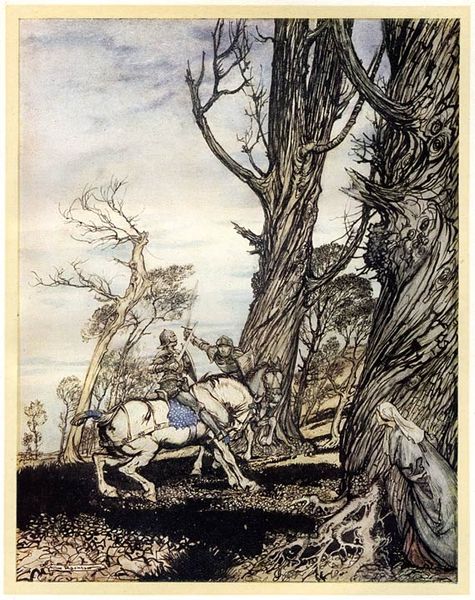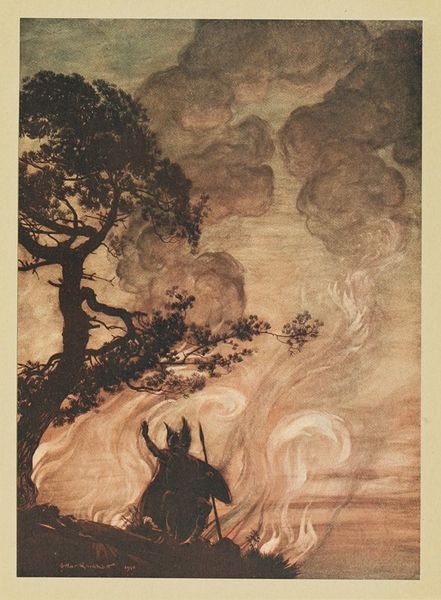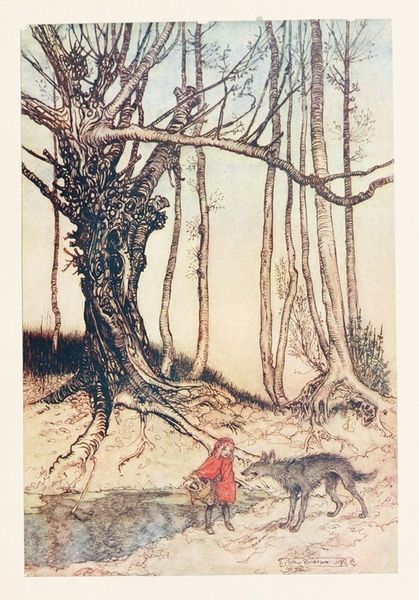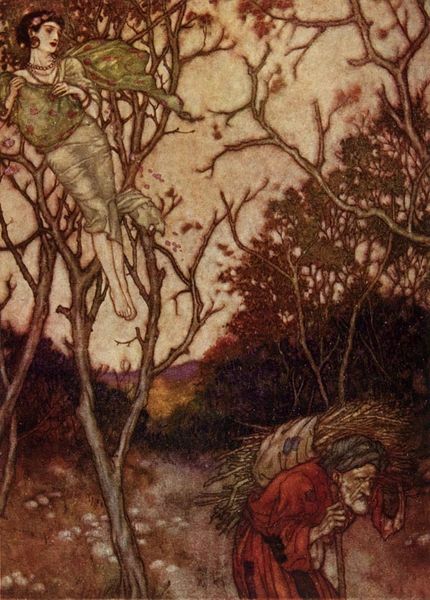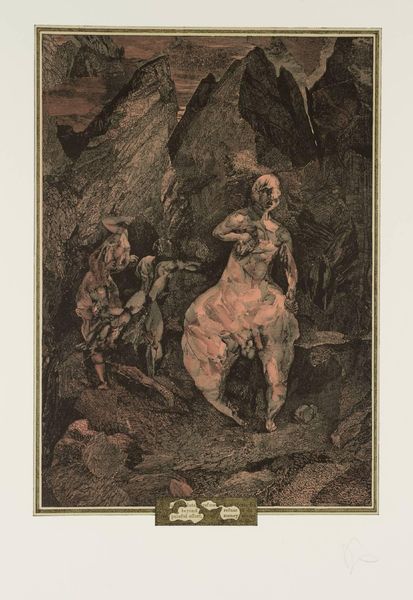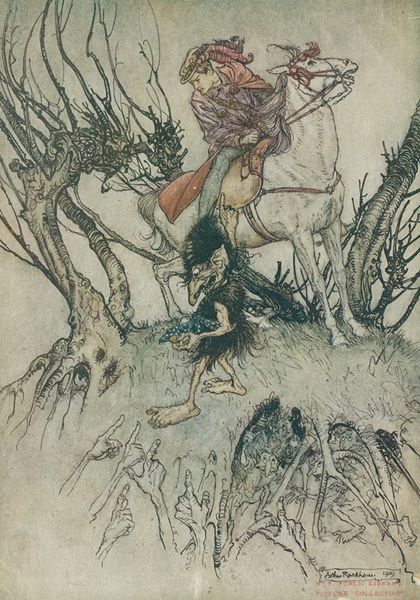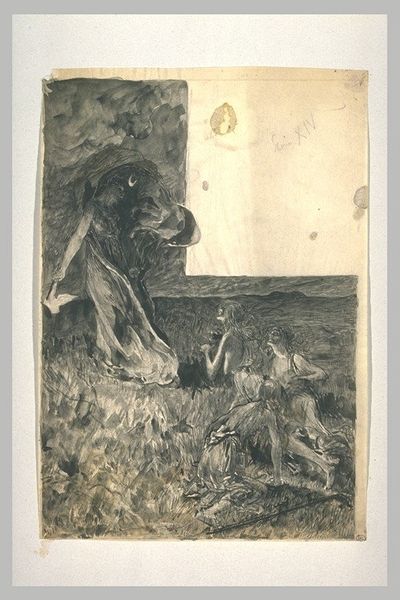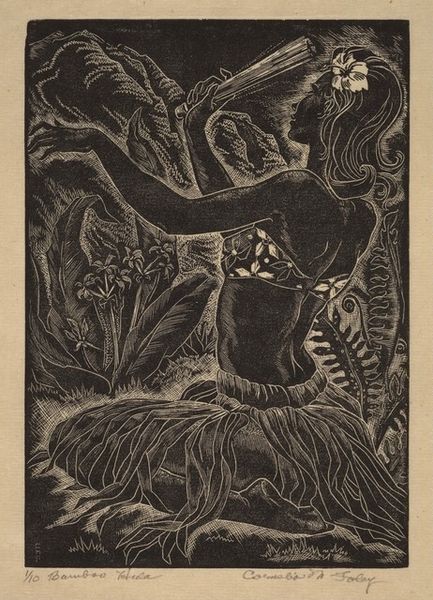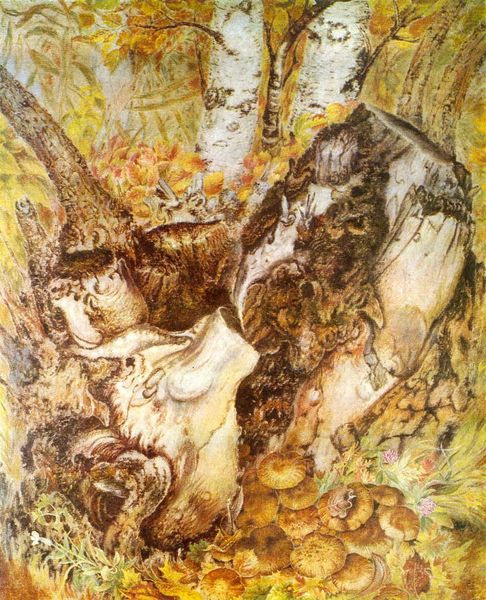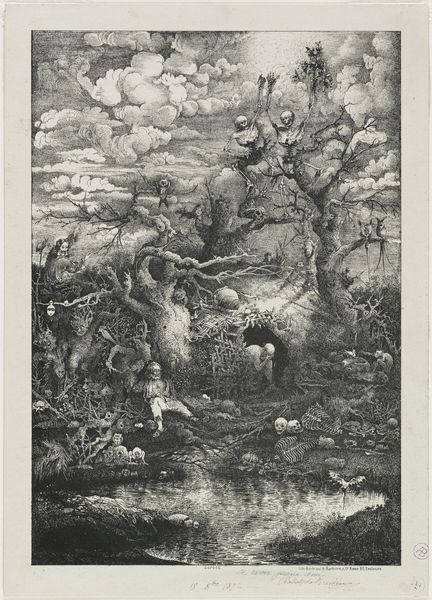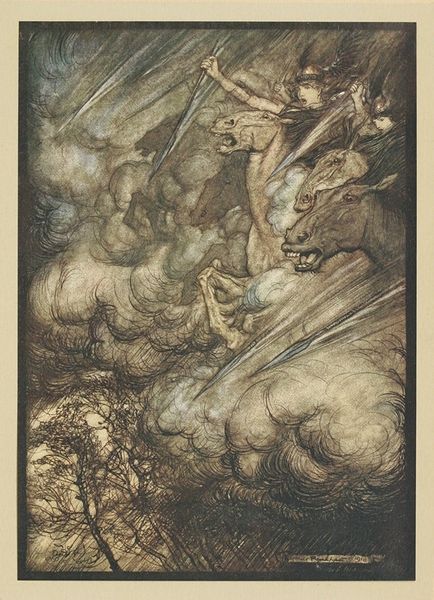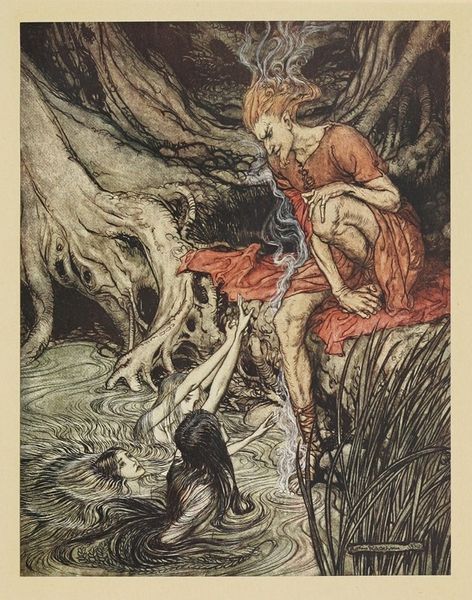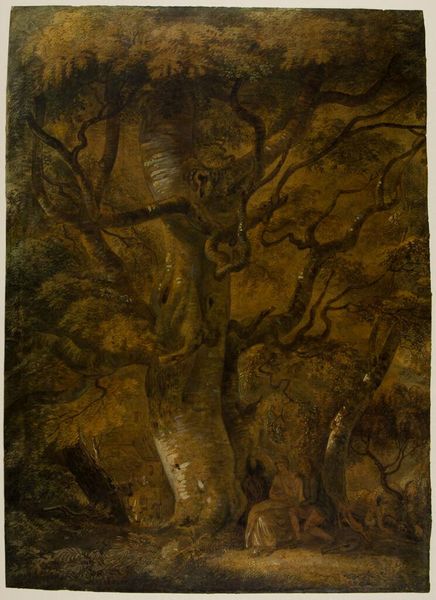
They worked themselves up into such a rage that they tore up trees by the roots 1920
0:00
0:00
Copyright: Public Domain: Artvee
Editor: This is Arthur Rackham’s “They worked themselves up into such a rage that they tore up trees by the roots,” from 1920. It's an illustration, seemingly for a book. I find the scene quite chaotic and violent, yet something about the line work feels delicate. How do you interpret this work, considering its historical context? Curator: It’s important to recognize Rackham’s place within the broader Arts and Crafts movement, and to understand the political anxieties that informed the aesthetics of his era. Can we consider these enraged figures as representative of suppressed rage and frustration finding a violent outlet? Perhaps reflecting the tumultuous interwar period after World War I? Editor: That's interesting. I hadn’t considered the political dimension. So, you're seeing this as a commentary on the collective anger brewing after the war? Curator: Precisely. Consider the fairytale-like aesthetic. It could function as a symbolic distancing, a method for critiquing society without direct confrontation. The 'otherness' of these creatures allows for explorations of darker human impulses and suppressed emotions related to power dynamics and perhaps class struggle. Where do you see visual cues for that? Editor: I see it in the figures' frenzied energy and the distorted environment. The uprooted trees speak to disruption, almost a kind of primal scream against established order. It connects the individual to a larger social experience. Curator: Exactly. And even consider the fairy-tale genre itself. Rackham's illustrations often draw on folklore, and folklore, from a Marxist perspective, can represent the narratives and collective memory of the working class, co-opted by the elites. The rage depicted can therefore, reflect that displacement. Editor: Wow, I never thought about it like that before. Thanks, that was really insightful. I am left wondering what "rage" really means. Curator: It also allows for thinking how it is related to systemic social and historical injustice and power imbalance.
Comments
No comments
Be the first to comment and join the conversation on the ultimate creative platform.
